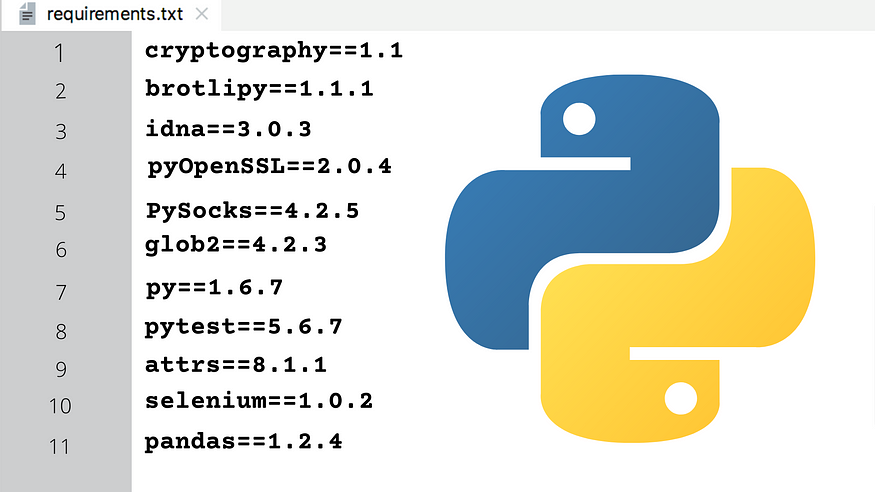
requirements.txt is an essential file that stores the information about all the libraries, modules, and packages that are used while developing a particular project. It contains all the dependencies needed for the project to run.
The traditional way to generate the requirements file is to do
pip freeze > requirements.txt
The above approach works well if you have a virtual env that consists of only the project-specific packages. But in case, you don’t have a virtual env created, pip freeze will save all the packages that were installed in the base environment even if we are not using them in our project.
The easy & faster alternative of pip freeze is the pipreqs package in python.
Generating requirements.txt with pipreqs can be done in two steps:
pip install pipreqs- checkout to the root project folder and run
pipreqs .ORpipreqs /path/to/project. This will directly create the file in the root folder.
→ In case you want to review the packages before creating the file, run pipreqs /path/to/project —-print.
→ If the requirements.txt is already created & you want to overwrite it, pipreqs /path/to/project --force.
→ If there are multiple sub-directories within your project & you want to ignore them while creating the requirements, pipreqs /path/to/project --ignore /path/to/directory
→ If you want to store the packages in some other file, use pipreqs /path/to/project --savepath /location/of/file/
Note: _pipreqs_ scans the .py files in the root folder & uses the imports in the project to generate the file, so in case there are some additional plugin dependencies, you will have to add them manually.
